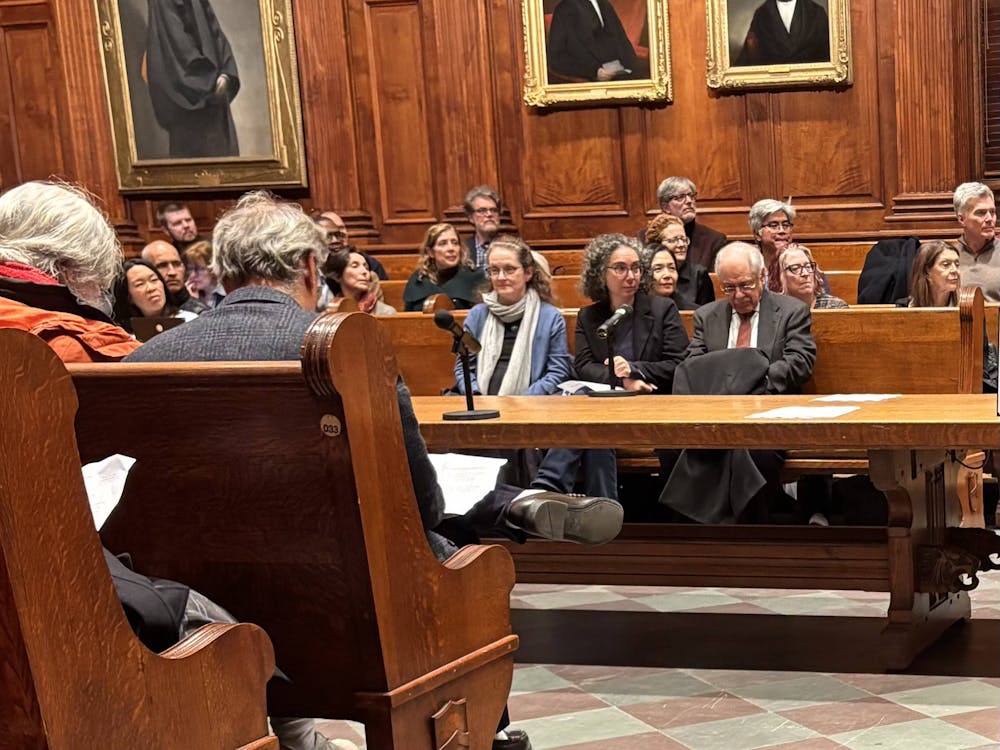Scientists have long puzzled over how flocks of several thousand starlings flying without a leader and without a destination manage to remain one cohesive unit, but University researchers have now determined the cause of this flock unity.
In a paper published Jan. 31 in the PLoS-Computational Biology journal, mechanical and aerospace engineering professor Naomi Leonard ’85 and Ph.D. candidate George Young GS proposed that the starlings communicate with the seven closest birds regardless of how densely packed the flock is. Former theories speculated that each bird’s awareness only extended a certain distance away so that it would detect any object entering its hypothetical bubble.
Young recently received one of four Jacobus Fellowships, which are awarded by the U. to the four graduate students whose works have displayed the highest scholarly excellence.
Leonard and Young said they hope to use the study’s findings on social networks and group interactions to teach robots how to respond to their surroundings and other moving robots.
“We’re particularly interested in making groups of robots work together, and one of the key challenges is making them communicate efficiently,” Leonard said. “We’re trying to understand if we limit the number of neighbors that a robot interacts with how should they best choose their neighbors so that you get the best performance at a minimal cost.”
The study mainly examined how individual agents act to maximize the performance of the group — the flock’s ability to stay together — in the face of disturbances. For each starling, the trade-off occurs between minimizing its use of energy and staying with the flock. Leonard says her goal was to study how simple agents could create such complex formations.
“We think about these kinds of systems, like bird flocks, that perform so extraordinarily well as being made up of relatively simple individuals — individuals who have limitations on what they can do,” she said. “The big problem is understanding the mechanisms that allow a whole bunch of individuals to perform so incredibly well.”
One of the main factors that Young and Leonard examined was the shape of the flock. They found that the thickness of the birds determines flock shape.
“If you have something that’s all in the plane — like with animals on the ground or a school of fish in very shallow water — it’s essentially two-dimensional, and in that case you need more neighbors to get your optimal behavior,” Young said. “As it becomes thicker — kind of spherical or cubic in all direction — then you need fewer neighbors.”
However, starling flocks are not spherical because a sphere does not increase the flock’s ability to stay together, Young said. In other words, the flock’s performance remains constant past a certain thickness.
Young, Leonard and Luca Scardovi — who now works at the University of Toronto — spearheaded the study using data gathered by physicists Andrea Cavagna and Irene Giardina from the Sapienza University of Rome. Cavagna and Giardina used videos to precisely track the three-dimensional movements of each starling. Over the course of eight to 10 years, they gathered data on about a dozen flocks.
The physicists in Rome had already previously identified the number seven as key to the starling flock formation. However, they were not able to provide reasons or dependencies for this oddly specific number. Leonard and Young independently confirmed these results by using mathematical models that evaluated how well the flock as a whole performed when each individual bird paid attention to a certain number of neighbors.

When they varied this number from one to 11 using 400 snapshots of the birds, they found that the flock’s performance peaked at seven. Leonard said that performance could also be analyzed based on how much energy each bird expends.
“There’s this notion that individuals have sort of minimalist capabilities, not necessarily that they lack the means, but it’d be useful if they could reserve those means for other things,” Leonard said. “If they can use as little of their energy or effort or attention as possible and still as a group exhibit this great group level performance, then that’s really useful.”
Even though starlings deal only with local connections within their flock, the findings have potential implications in various models of social networks, Young said. Young used networks of bacteria as an example.
“Even things like bacteria — where they’re not explicitly communicating with each other — they can release chemicals in their local environment and can carry signals to others nearby,” Young explained.
However, the range of the study’s applications remains uncertain. The concept of starling flock interactions will not apply to, for instance, a line of geese, which according to Young generally follow a leader and form lines to achieve aerodynamic efficiency. Within a flock of several hundred starlings, no obvious leader emerges, especially because the flock will frequently change directions.
“When you add extra concerns, the optimal performance can change,” he said.
In addition, the study collected data from flocks for which the number of starlings varied from 400 to 3000 birds. Should the number of group members become very small or very large, the pattern of interacting with seven neighbors may or may not vary, Young said. Leonard added that she hopes to explore the effects of these factors in the future.







